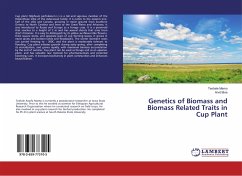
Broschiertes Buch
September 2024
Verlag Unser Wissen

Broschiertes Buch
4. Februar 2016
LAP Lambert Academic Publishing
Broschiertes Buch
30. September 2024
Sciencia Scripts
Broschiertes Buch
30. September 2024
Edizioni Sapienza
Broschiertes Buch
30. September 2024
Ediciones Nuestro Conocimiento
Broschiertes Buch
September 2024
Edições Nosso Conhecimento
Broschiertes Buch
September 2024
Editions Notre Savoir
Ähnliche Artikel

Broschiertes Buch
3. April 2022
Verlag Unser Wissen

Broschiertes Buch
Dieses Buch ist ein Leitfaden für jeden Genetiker, der eine Studie zur Vererbung qualitativer Merkmale durchführt.
19. Januar 2022
Verlag Unser Wissen

Broschiertes Buch
26. Juli 2022
Verlag Unser Wissen

Broschiertes Buch
Molekularbiologische und phänotypische Untersuchung nach Überexpression des GRAS-Transkriptionsfaktors SCL7
4. Dezember 2017
AV Akademikerverlag

Broschiertes Buch
Mannose-bindende Lektin (MBL)-Gene in Verbindung mit Mastitis bei Rindern und Büffeln
23. August 2023
Verlag Unser Wissen

Broschiertes Buch
23. August 2021
Verlag Unser Wissen


Broschiertes Buch
Genetische Dynamik unter Beteiligung von Chromosom 21
9. Januar 2021
Verlag Unser Wissen
Ähnlichkeitssuche: Fact®Finder von OMIKRON
